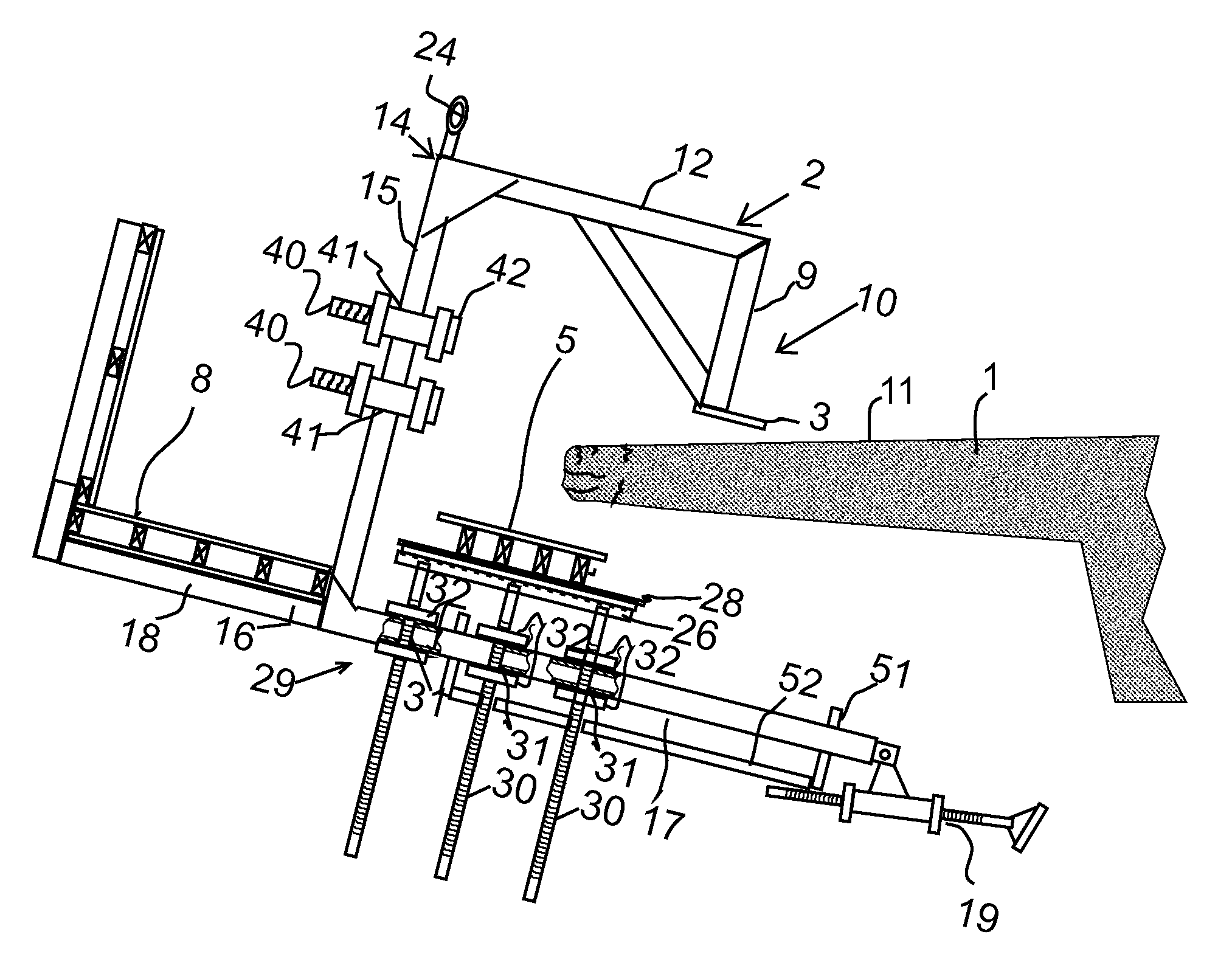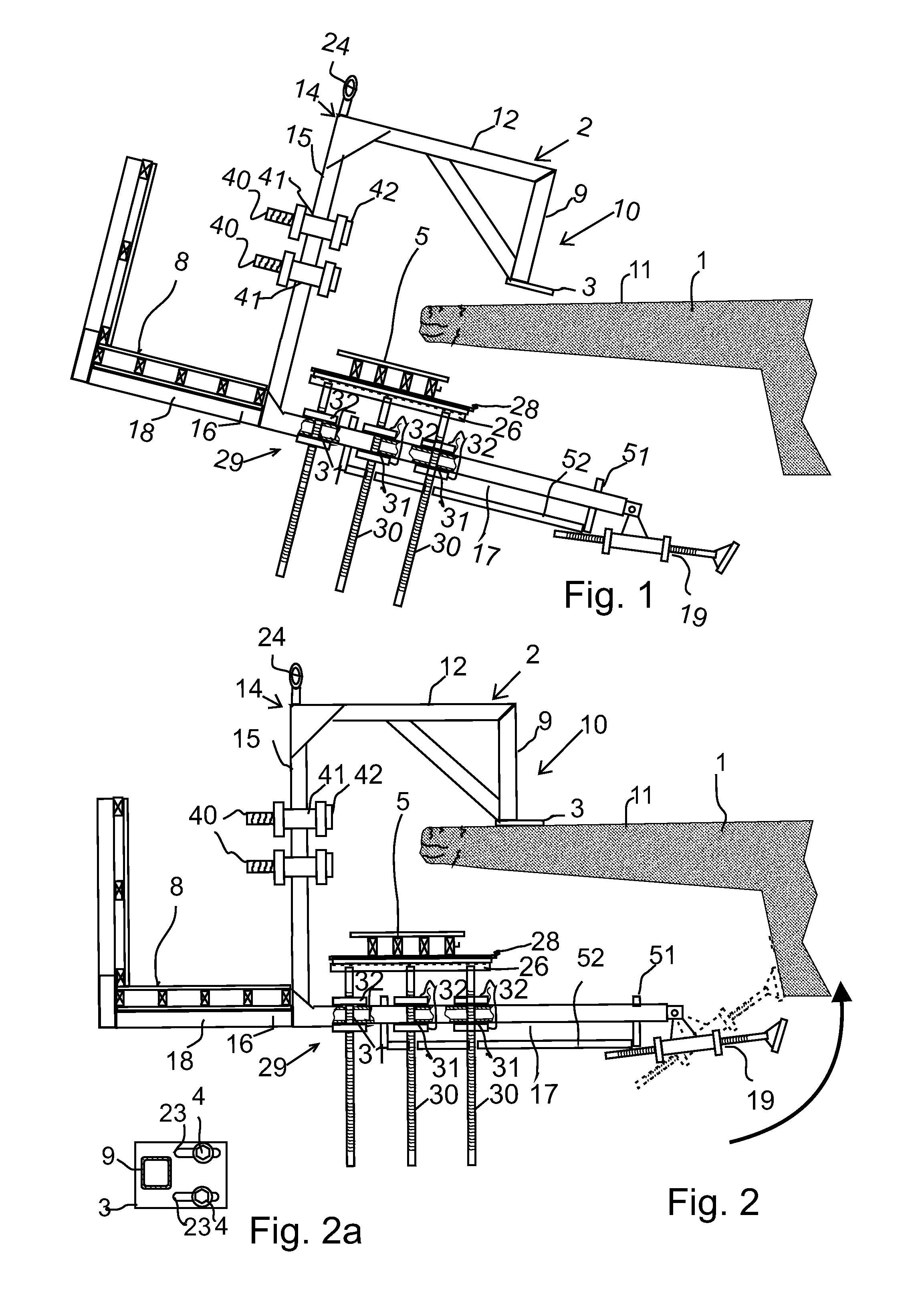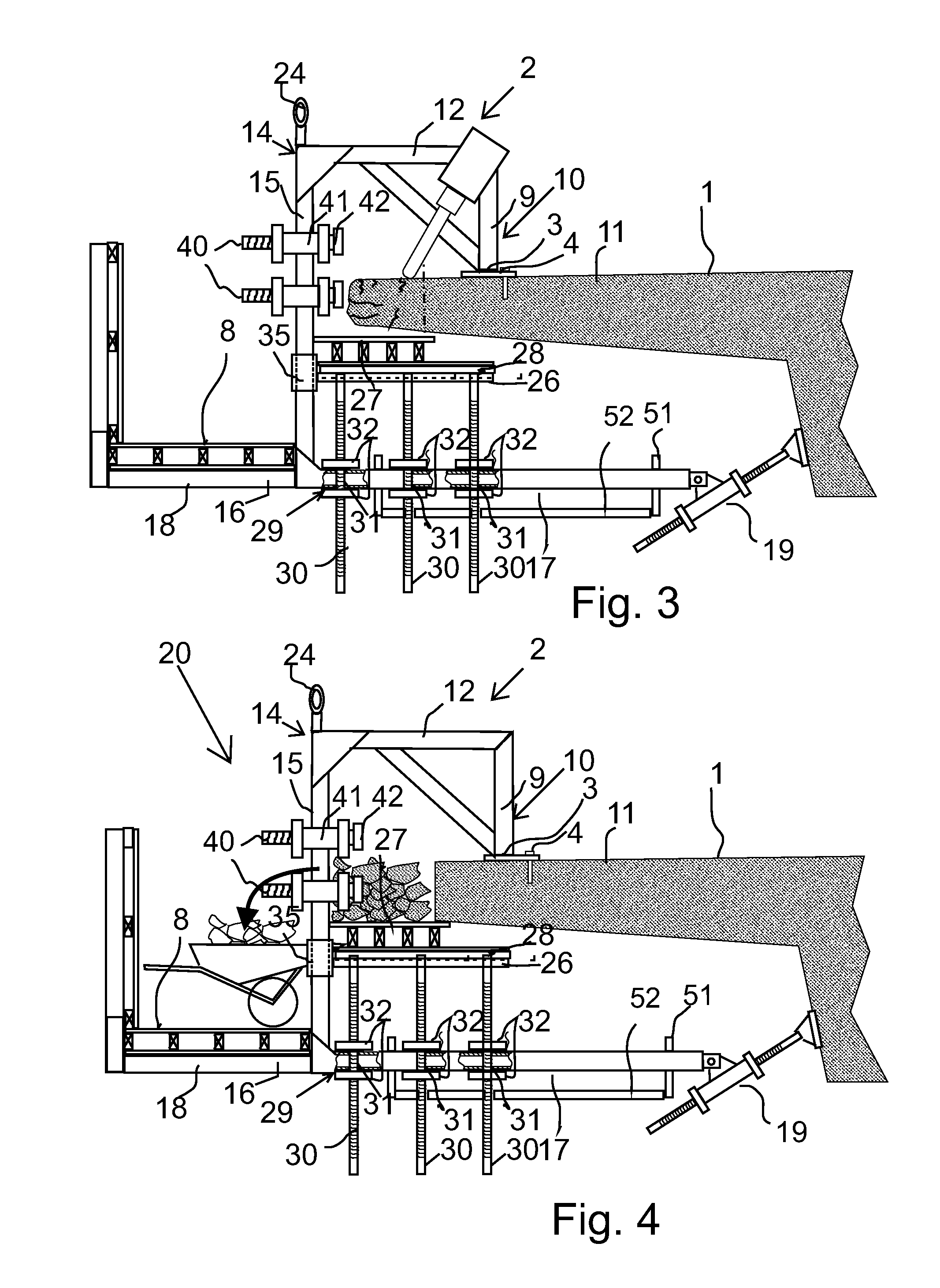Scaffold Element, Arrangement and Method of Use
a technology of scaffold element and arrangement, applied in the direction of scaffold accessories, bridges, building scaffolds, etc., can solve the problems of difficult mounting, damage to the edge structure, and disturbing the road traffic and often also the railway traffic of the bridge with lifting machines
- Summary
- Abstract
- Description
- Claims
- Application Information
AI Technical Summary
Benefits of technology
Problems solved by technology
Method used
Image
Examples
Embodiment Construction
[0058]FIG. 1-10 show the scaffold element to be mounted on the upper surface of a concrete bridge in order to repair a concrete edge structure of the bridge. FIG. 1-9 show the bridge in cross-section. As seen from the side view 10, in the arrangement a number of scaffold elements 2 are arranged at a distance from each other along the length of the portion of the bridge that needs to be repaired. For example when renewing the edge beam of the bridge or broadening the deck of the bridge, the scaffold arrangement is usually constructed to extend over the entire length of the bridge.
[0059]FIG. 1-9 show one scaffold element 2. Suitably, all elements 2 in the arrangement are identical.
[0060]The scaffold elements 2 are supported by support members 3, 4 onto the upper surface close to the edge of the bridge, as will be described below. Mould walls 5, 6, 7 can be supported onto the scaffold elements 2 to form a concrete casting mould for casting a new edge structure for the bridge. The scaff...
PUM
 Login to View More
Login to View More Abstract
Description
Claims
Application Information
 Login to View More
Login to View More - R&D
- Intellectual Property
- Life Sciences
- Materials
- Tech Scout
- Unparalleled Data Quality
- Higher Quality Content
- 60% Fewer Hallucinations
Browse by: Latest US Patents, China's latest patents, Technical Efficacy Thesaurus, Application Domain, Technology Topic, Popular Technical Reports.
© 2025 PatSnap. All rights reserved.Legal|Privacy policy|Modern Slavery Act Transparency Statement|Sitemap|About US| Contact US: help@patsnap.com



